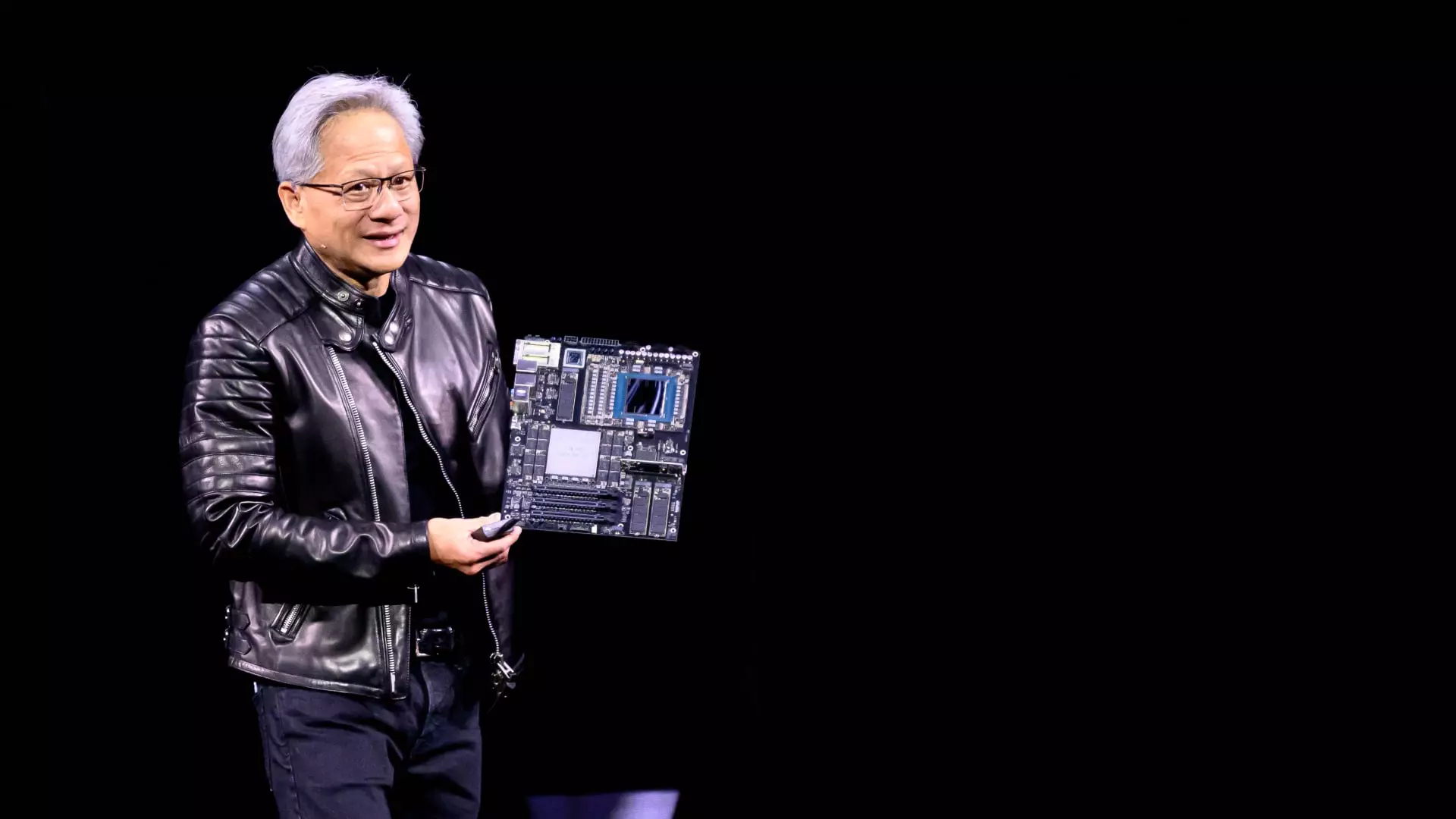In a world where technological advancements are often celebrated as the cornerstone of progress, Nvidia’s CEO Jensen Huang stands at the forefront, delivering a potent message that resonates through the corridors of the tech industry. During a riveting two-hour keynote at the recent GTC conference, Huang emphasized one thing: the urgency for cloud providers to invest in the fastest chips available, which are poised to dramatically alter the landscape of artificial intelligence (AI). With an unwavering belief in the next decade’s exponential growth in performance, Huang argues that speed will not only be a critical advantage but the most effective cost-reduction strategy for businesses seeking to optimize their operations.
The heart of Huang’s argument lies in his assertion that faster chips will ultimately dissolve concerns over the cost and return on investment associated with Nvidia’s graphics processors, or GPUs. When delivering this critical insight, Huang engaged in some “envelope math,” demonstrating the potential economic advantage of quicker, more powerful chips for cloud providers. What’s striking here is the level of detail he provided—addressing the cost-per-token measurement that determines the expenditure tied to generating AI outputs. This frank discourse illustrates Nvidia’s commitment to transparency, particularly important for hyperscale cloud and AI companies navigating uncertain economic terrains.
Optimizing Revenue: The Blackwell Ultra Systems
The excitement surrounding the rollout of Nvidia’s Blackwell Ultra systems cannot be overstated. Huang predicts that these new systems could generate a staggering fifty times more revenue for data centers compared to their predecessors, the Hopper systems. This transformative leap in technology is undeniably enticing, and it highlights Nvidia’s core strategy—facilitating more efficient service delivery to multiple users simultaneously. As cloud providers rush to secure these advanced systems, the appetite for Nvidia’s products becomes increasingly evident.
However, the looming question remains: Can the mammoth cloud companies like Microsoft, Amazon, Google, and Oracle sustain their bold investments in AI? Investors are rightfully anxious about the sustainability of these capital expenditures, particularly given the considerable financial stakes involved. Analysts estimate the cost of each Blackwell GPU at around $40,000, a hefty price tag that necessitates a strategic cost-benefit analysis. The recent spike in purchases (3.6 million units already acquired) not only reflects a strong current demand but hints at a robust future trajectory in AI infrastructure.
The Long Game: Nvidia’s Strategic Roadmap
In an era defined by rapid technological change, Nvidia’s audacious roadmap toward the anticipated Rubin Next and Feynman AI chips for 2027 and 2028 respectively evokes a sense of confidence and foresight. Huang articulated this strategic release with clarity, acknowledging that cloud customers are already planning extensive data centers and necessitating insight into Nvidia’s future direction. The assertion that several hundred billion dollars worth of AI infrastructure is on the drawing board is not merely an optimistic forecast; it underscores a reality poised to reshape the digital landscape.
Moreover, Huang’s dismissal of custom chips as competitors to Nvidia’s GPUs offers a bold perspective. While some in the industry might view custom application-specific integrated circuits (ASICs) as rising threats, Huang counters this notion, emphasizing their inherent inflexibility. With AI algorithms evolving at breakneck speeds, the adaptability of Nvidia’s technology remains a primary concern. For Huang, it’s clear that only the best ASIC technology will thrive in the face of Nvidia’s relentless innovation—a reality that many custom chips may struggle to meet.
Investing in the AI Revolution
What makes Huang’s keynote particularly impactful isn’t just the product announcements or technical prowess; it’s the overarching narrative of opportunity that Nvidia represents. As AI infrastructure prepares to flourish on a global scale, the potential for economic growth and technological advancement stands unparalleled. Huang urges demanders of technology to consider what they truly want to achieve with their investments—especially when “several hundred billion dollars” are at play.
This call to action urges the tech community to not only aspire for excellence in the tools they select but also to fully grasp the wider implications of their choices. As the market races toward an AI-driven future, the decisions made today will undoubtedly echo through time, influencing sectors from healthcare to education and beyond. In this unfolding story of AI innovation, Nvidia isn’t just a player—it’s a catalyst for change and an advocate for smarter investment in technology.

